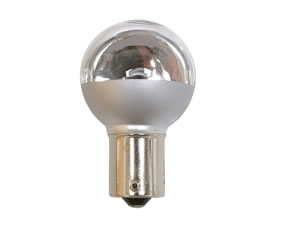
Modern-day airplanes are fitted with a variety of lights. In addition to flashing strobe lights, for instance, most of them feature beacon lamps. What are beacon lamps exactly, and why do airplanes have them?
What Are Beacon Lamps?
Beacon lamps are small lights found on the top and bottom of the fuselage. They are designed to make airplanes more visible so that collisions are less likely to occur. Anytime an airplane is active — taking off, landing, flying or taxiing — its beacon lamps will flash.
Like the strobe lights found on airplanes, beacon lights flash. Strobe lights, however, are white flashing lights, whereas beacon lamps are red flashing lights.
The Purpose of Beacon Lamps
Beacon lamps play an important role in aviation safety. As previously mentioned, they make airplanes more visible. When activated, beacon lamps will flash bright red light that’s visible to other airplanes as well as ground crews. By making airplanes more visible, beacon lamps reduce the risk of collisions and accidents.
Beacon lamps are particularly useful in low-visibility situations, such as nighttime or foggy weather. Low-visibility situations can make it difficult for ground crews to see airplanes. Beacon lamps, though, provide powerful illumination that improves visibility.
Beacon lamps also signal that an airplane’s engines are active. When ground crews see these red lights flashing, they will know that the airplane is moving or about to move.
Top vs Bottom Beacon Lamps
There are beacon lamps on the top and bottom of an airplane’s fuselage. Those on the top make the airplane more visible from above. They are most useful for air traffic control towers and nearby airplanes.
Beacon lamps on the bottom of the fuselage, on the other hand, make the airplane more visible from below. They are most useful for ground crews.
What Type of Lighting Technology Do Beacon Lamps Use?
Most beacon lamps use one of two lighting technologies: incandescent or light-emitting diode (LED). Incandescent is the most common. This traditional lighting technology leverages a conductive filament, such as a wire, to produce light. An electric current will travel through the filament, thereby causing it to heat up.
A newer type of lighting technology used for beacon lamps is LED. LEDs leverage a semiconductor to produce light. They feature a semiconductor that releases energy in the form of photons as an electric current passes through it. LEDs are more efficient and longer-lasting than incandescent lights, making them a popular alternative for beacon lamps and other types of aviation lights.
A light-emitting diode is a semiconductor device that emits light when current flows through it. Electrons in the semiconductor recombine with electron holes, releasing energy in the form of photons. The color of the light is determined by the energy required for electrons to cross the band gap of the semiconductor.



